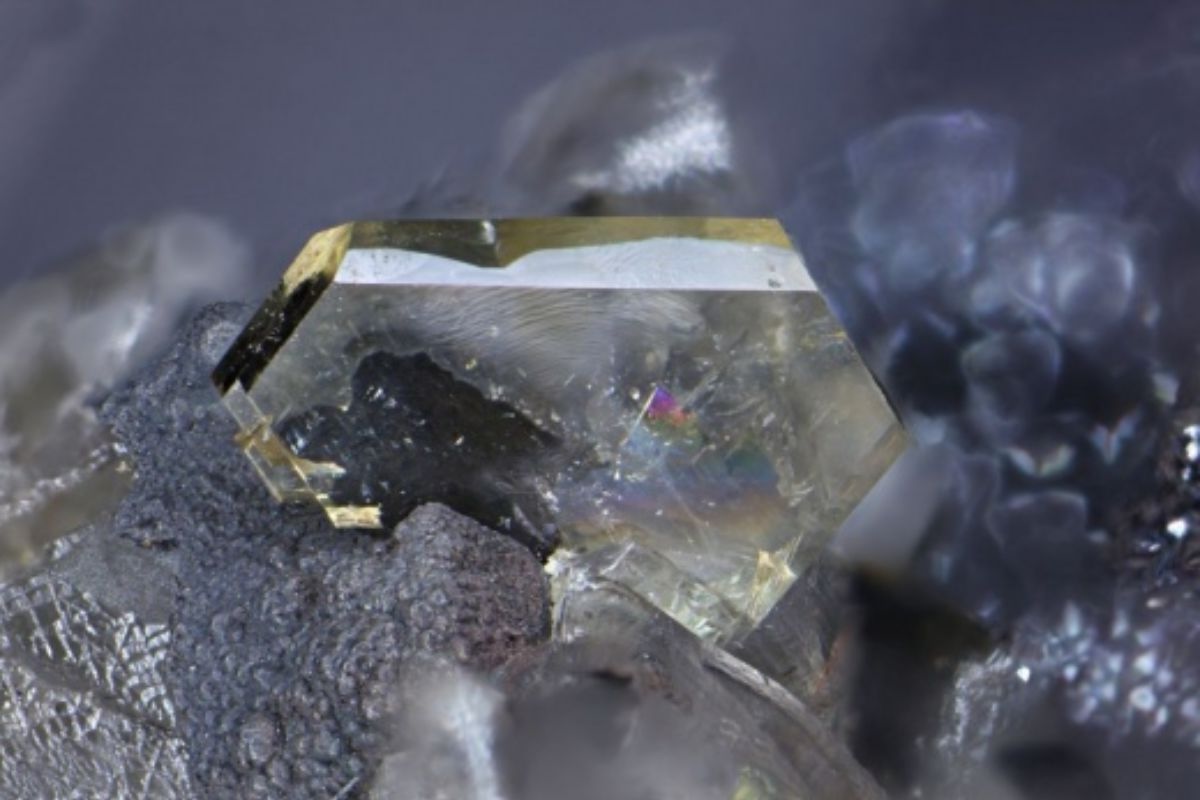
Cadmoselite is a rare mineral that has intrigued geologists and mineral enthusiasts alike. Found primarily in hydrothermal veins, this mineral is composed of cadmium, selenium, and sulfur. Cadmoselite is notable for its metallic luster and dark gray to black color, making it a striking specimen for collectors. Its rarity and unique composition make it a subject of study for those interested in mineralogy and earth sciences. This mineral often forms in environments rich in selenium, typically alongside other rare minerals. Understanding Cadmoselite can provide insights into geological processes and the conditions under which it forms. Ready to dive into 30 fascinating facts about this intriguing mineral? Let's get started!
Key Takeaways:
- Cadmoselite is a rare, shiny mineral with unique properties. It's named after a Greek mythological figure and is often found in hydrothermal veins. Its occurrence can provide clues about geological history.
- Cadmoselite contains cadmium and selenium, and it's often found in specific geological settings. It's not commonly used in jewelry due to its softness and rarity, but it's prized by collectors for its unique properties.
What is Cadmoselite?
Cadmoselite is a rare mineral that has intrigued geologists and mineral enthusiasts alike. Found in specific geological settings, this mineral has unique properties and a fascinating history. Here are some intriguing facts about Cadmoselite.
-
Cadmoselite is a selenide mineral composed primarily of cadmium and selenium.
-
It was first discovered in Tsumeb, Namibia, a location known for its rich mineral diversity.
-
The mineral was named after the Greek mythological figure Cadmus, who is credited with introducing the alphabet to Greece.
-
Cadmoselite typically forms in hydrothermal veins, which are fractures in rocks filled with mineral-rich water.
-
Its crystal system is hexagonal, meaning it forms six-sided crystals.
-
The mineral is often found in association with other selenide minerals like clausthalite and klockmannite.
-
Cadmoselite has a metallic luster, giving it a shiny, reflective appearance.
-
Its color ranges from gray to black, depending on the specific composition and impurities.
-
The mineral has a hardness of 2.5 on the Mohs scale, making it relatively soft.
-
Cadmoselite is opaque, meaning light does not pass through it.
Chemical Composition and Properties
Understanding the chemical makeup and properties of Cadmoselite can shed light on its unique characteristics.
-
The chemical formula for Cadmoselite is CdSe, indicating it contains cadmium and selenium.
-
It has a high specific gravity of around 8.1, making it quite dense.
-
Cadmoselite is soluble in nitric acid, which is a useful property for chemical analysis.
-
The mineral can exhibit radioactivity due to the presence of selenium.
-
Cadmoselite is often used in scientific research to study the properties of selenide minerals.
-
It can form solid solutions with other selenides, meaning it can mix with them at the atomic level.
-
The mineral's reflective properties make it useful in certain optical applications.
-
Cadmoselite is not commonly used in jewelry due to its softness and rarity.
-
It has a distinctive streak color, which is the color of the powder left when it is scratched on a surface.
-
The mineral's crystal habit can vary, but it often forms prismatic crystals.
Geological Occurrence
Cadmoselite's geological occurrence is as fascinating as its properties. Here are some facts about where and how it is found.
-
Besides Namibia, Cadmoselite has been found in Russia and Germany.
-
The mineral is often located in oxidized zones of ore deposits.
-
It can be found in sedimentary rocks, particularly those rich in organic material.
-
Cadmoselite is sometimes associated with volcanic activity, forming in volcanic fumaroles.
-
The mineral can also be found in metamorphic rocks, which have been altered by heat and pressure.
-
Cadmoselite is often mined as a byproduct of other mining operations, particularly those for cadmium and selenium.
-
The mineral is relatively rare, making it a prized specimen for collectors.
-
Cadmoselite can form in low-temperature environments, unlike many other minerals.
-
It is often found in small quantities, making large specimens particularly valuable.
-
The mineral's occurrence can provide important clues about the geological history of an area.
Final Thoughts on Cadmoselite
Cadmoselite, a rare mineral, holds a unique place in the world of geology. Its distinct properties and limited occurrence make it a subject of fascination for scientists and collectors alike. Found primarily in specific regions, this mineral's composition includes cadmium, selenium, and sulfur, contributing to its rarity and value. Understanding cadmoselite not only enriches our knowledge of Earth's geological diversity but also highlights the intricate processes that form such unique minerals. Whether you're a geology enthusiast or just curious about the natural world, cadmoselite offers a glimpse into the complexity and beauty of our planet's mineral wealth. Keep exploring and learning about these hidden gems, as each discovery brings us closer to appreciating the wonders beneath our feet.
Frequently Asked Questions
Was this page helpful?
Our commitment to delivering trustworthy and engaging content is at the heart of what we do. Each fact on our site is contributed by real users like you, bringing a wealth of diverse insights and information. To ensure the highest standards of accuracy and reliability, our dedicated editors meticulously review each submission. This process guarantees that the facts we share are not only fascinating but also credible. Trust in our commitment to quality and authenticity as you explore and learn with us.
